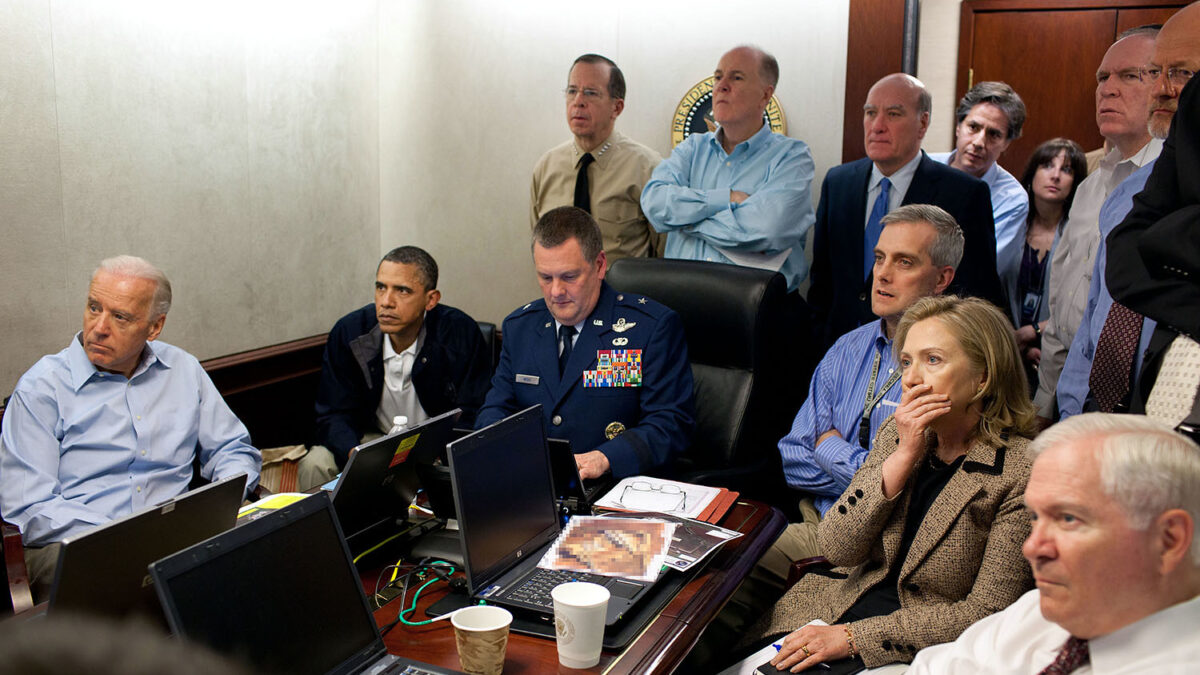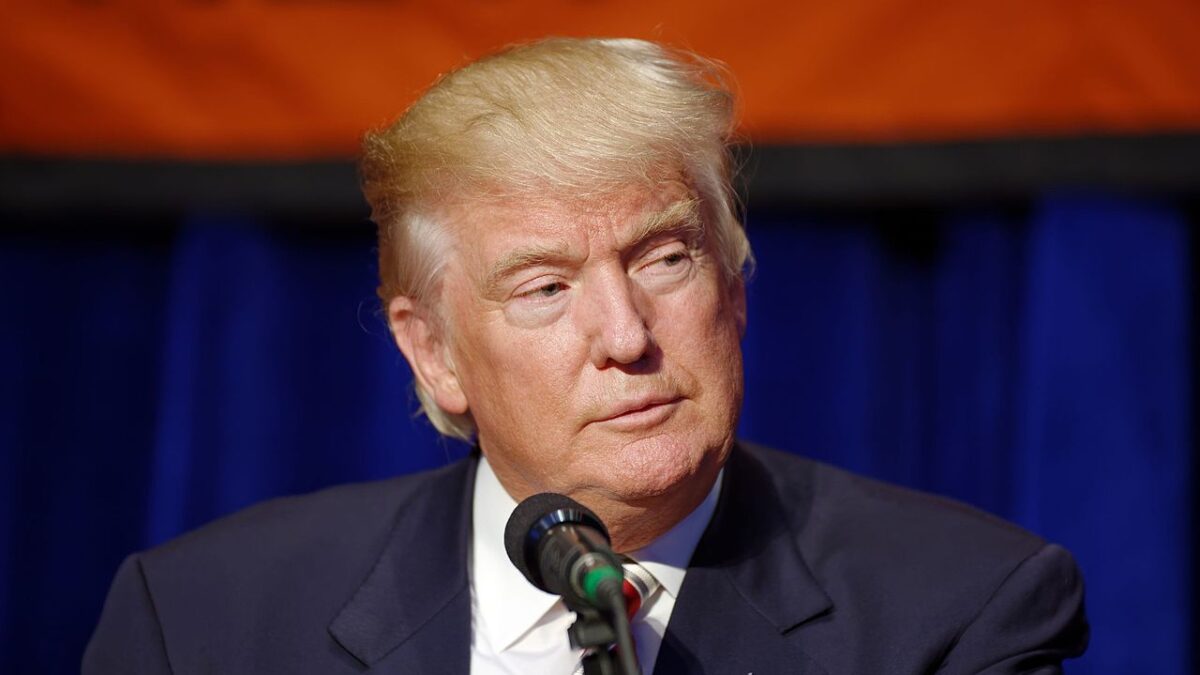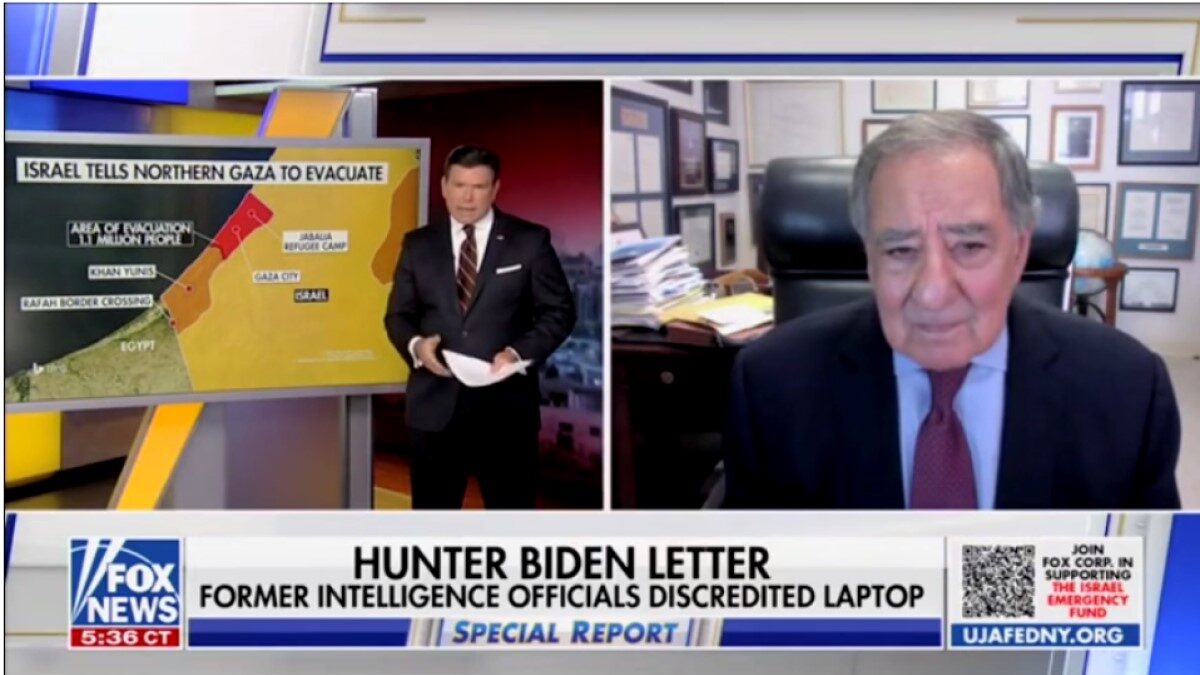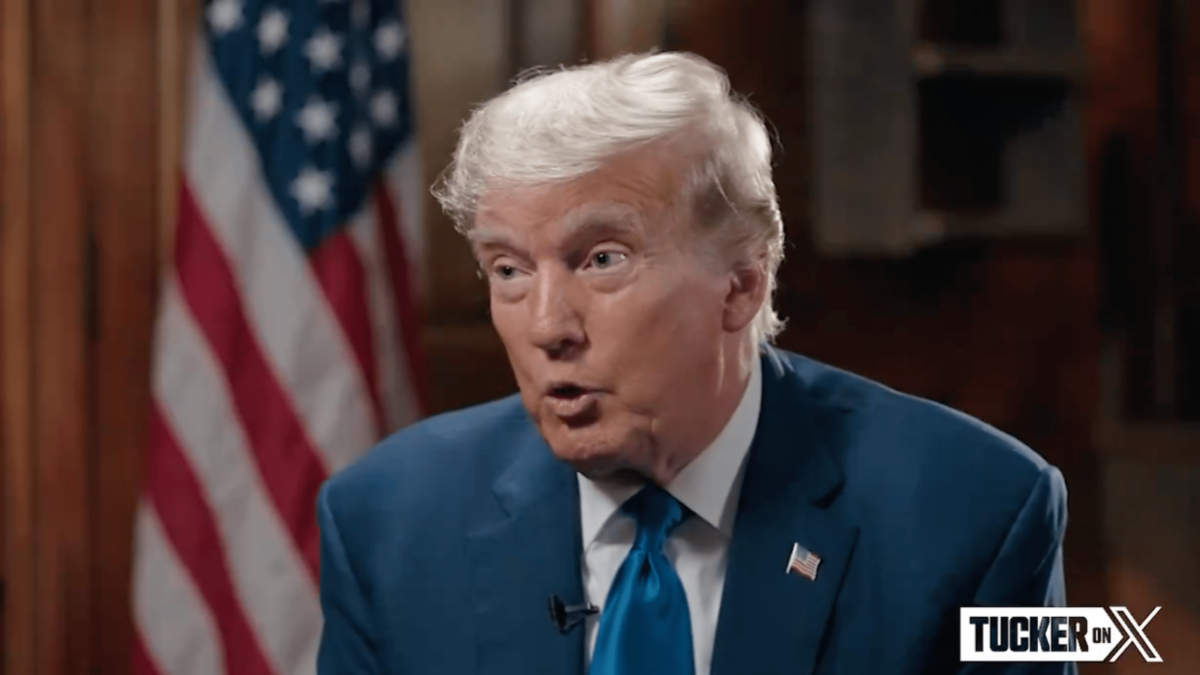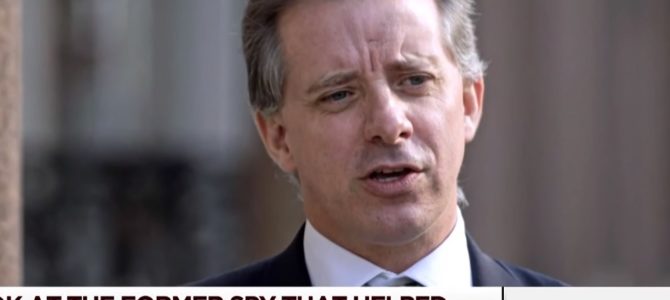
It turns out Christopher Steele wasn’t 007.
For years, the media assured Americans that the dossier alleging treasonous collusion between Donald Trump and Russia was based on the scrupulous work of a mastermind British ex-spy and his vast network of credible and well-connected sources spread throughout Europe. It wasn’t true.
Steele did not personally collect any of the factual information in his reports. The “vast network” was instead a “social circle” of an American-based former Brookings Institute junior staffer, recently identified for the first time as Igor Danchenko. The friends didn’t have well-documented claims so much as rumors, drunken gossip, and outright brainstorming, conjecture, and speculation. Even that information was “multiple layers of hearsay upon hearsay” before it got to Steele, who then hyperbolically overstated it. And the damning claims of “collusion” appear to have been scandalously misattributed or invented out of whole cloth.
With such shoddy information collection and analysis methods, there was never any reason to give credence to any of the salacious allegations in the dossier, whether it was claims of secret deals with Russian oil concerns, secret meetings in foreign capitals, prostitutes urinating on Moscow hotel room beds, files of compromising information, or the careful cultivation of Trump, yes Trump, into the most effective Russian agent in history.
The media have a problem, then, given that they repeatedly led viewers and readers to believe Steele was a master spy. They can almost get away with ignoring the recent news that once again shows their previous reporting was catastrophically wrong. In fact, some media outlets did just that.
But after breathlessly reporting — day in and day out for years — what they claimed were important updates buttressing Steele’s collusion narrative, they can’t completely hide the on-the-record revelations showing how the collusion narrative was invented and used to undermine the Trump campaign and administration.
Declassification Leads to Identification of Steele’s Source
The New York Times’ Adam Goldman, who won a Pulitzer Prize for his role in pushing the Russia collusion narrative, and his colleague Charlie Savage came up with an inventive framing for how to downplay the latest declassified document revealing in detail that the FBI knew by January 2017 that the dossier was bunk. Perhaps because The New York Times played such a pivotal role in advancing the Russia collusion narrative, they buried the explosive news deep in the second half of the lengthy story and instead went with “The F.B.I. Pledged to Keep a Source Anonymous. Trump Allies Aided His Unmasking.”
It is a common trope for media who pushed the collusion hoax to fret that transparency about the Russia collusion hoax will harm the republic. Here are a few other times they did that.
The reporters provided no evidence for their main claim that the FBI pledged to keep Danchenko’s identity a secret, although they do report he was given immunity for speaking with the FBI about his conversations with friends that ended up in the dossier. They do not explain why such immunity was requested or granted.
In his December 2019 report, Michael Horowitz repeatedly wrote that the FBI’s interviews of Steele and the person now identified as Danchenko should have made the agency realize that their Russia investigation had massive problems. Horowitz strongly criticized the Russia collusion investigators for falsely portraying the dossier and the results of the interview to the secretive Foreign Intelligence Surveillance Court in order to be able to continue spying on Trump associate Carter Page.
The Times begrudgingly admits late in the story that “[t]he Steele dossier was deeply flawed,” and that “Danchenko’s statements to the F.B.I. contradicted parts of the dossier, suggesting that Mr. Steele may have exaggerated the soundness of other allegations, making what Mr. Danchenko portrayed as rumor and speculation sound more solid.”
It’s a remarkably dry way to describe the seriousness of the wrongdoing.
All four of the applications to spy on Page relied on a particular part of the dossier to support probable cause. Steele told the FBI the information came from a sub-source “close” to Trump, and that this person was the original provider of the pee-tape information. It strongly appears this source is supposed to be Sergei Millian, a Russian-American businessman. Steele also said Danchenko met with this individual two or three times. But Danchenko said he never met this individual and that the pee-tape story came from someone else. Millian says he got two emails from Danchenko, but never acted on them.
Danchenko believed Millian might have placed a phone call to him, although he didn’t identify himself, but in this phone call the individual said no “exchange of information” between Trump and the Kremlin had anything “bad about it.” By the time that information got into the Steele dossier, the source was supposedly acknowledging that “the Russian regime had been behind the recent leak of embarrassing e-mail messages, emanating from the Democratic National Committee (DNC), to the Wikileaks platform” and that the relationship between the Trump campaign and Russian leadership was a “well-developed conspiracy of cooperation.” This was the most serious and consequential allegation in the dossier, and it was based on nothing.
Oh How The Mighty Have Fallen
When the dossier story was rolled out in the media from September 2016 through January 2017, the media portrayal of Steele and his spycraft was hagiographic. And yes, the dossier began to be rolled out in September 2016, contrary to the revisionists. They have said that while the Clinton campaign and Democratic National Committee secretly bought and paid for the dossier operation, it didn’t actually come out until after the election. Steele admitted in court he was meeting with reporters and law enforcement officials to get his dossier publicized and weaponized prior to the election.
Michael Isikoff’s September 23, 2016, Yahoo story framed businessman and veteran Page as a colluding Russian asset. It was lifted directly from Steele’s claims. Both Steele and Isikoff admit Steele was the source for the article. Isikoff showed no skepticism of Steele, whom he described as “a well-placed Western intelligence source.”
By the time Steele and his bosses at the research and media campaign firm Fusion GPS filtered their operation through Mother Jones’ David Corn a month later, Steele was described as a “veteran spy.” Later he was described as “a former senior intelligence officer for a Western country who specialized in Russian counterintelligence” and his memos were claimed to be “based on his recent interactions with Russian sources.”
Corn wrote, “a senior US government official not involved in this case but familiar with the former spy tells Mother Jones that he has been a credible source with a proven record of providing reliable, sensitive, and important information to the US government.” Much of what would become the settled Russia collusion hoax narrative was set in this Mother Jones article, which also claimed Steele, who was not yet identified by reporters, was maybe the foremost expert in Russia matters in the world. He “spent almost two decades on Russian intelligence matters and who now works with a US firm that gathers information on Russia for corporate clients.”
‘It started off as a fairly general inquiry,’ says the former spook, who asks not to be identified. But when he dug into Trump, he notes, he came across troubling information indicating connections between Trump and the Russian government. According to his sources, he says, ‘there was an established exchange of information between the Trump campaign and the Kremlin of mutual benefit.’
The Mother Jones story was part of an “October surprise” dump of Russia-Trump stories from the Clinton campaign. It didn’t work and Clinton didn’t push it, partly because of her own FBI troubles and partly because she was expected to win in a landslide.
The James Bond Myth Continues
By the time CNN’s Evan Perez, Jim Sciutto, Jake Tapper, and Carl Bernstein really got the Russia collusion hoax going full-steam on January 10, 2017, by serving as credulous leak receptacles for “multiple” anonymous “intelligence officials,” the credibility of the spy and his network were key components of the collusion narrative.
CNN told the world of the “classified documents” that include serious allegations of Russian operatives having “compromising personal and financial information” on Trump. The allegations came from a “former British intelligence operative, whose past work US intelligence officials consider credible,” they wrote. They said the information was so legitimate that it was “presented by four of the senior-most US intelligence chiefs — Director of National Intelligence James Clapper, FBI Director James Comey, CIA Director John Brennan, and NSA Director Admiral Mike Rogers.”
Some memos “were circulating as far back as last summer. What has changed since then is that US intelligence agencies have now checked out the former British intelligence operative and his vast network throughout Europe and find him and his sources to be credible enough to include some of the information in the presentations to the President and President-elect a few days ago.”
In fact, there had been no vetting at that point of the operative or his “vast network throughout Europe” (which did not exist). Their first interview of Danchenko, the “primary sub-source” who was the conduit for his old friends’ ideas, wouldn’t take place until weeks later.
Perez, Sciutto, Tapper, and Bernstein should have been good enough reporters to be skeptical of what their highly placed intelligence sources were wanting them to publish. They should have been skeptical enough to demand evidence for these claims, even if the claims came from high-level Obama appointees. Sciutto himself was an Obama appointee.
Steele Identified, Legend Grows
The false narrative set by these previous journalists quickly took hold. NBC reporters Michele Neubert, Ken Dilanian, Cassandra Vinograd and Tracy Connor One literally described Steele as James Bond. “Christopher Steele, Trump Dossier Author, Is a Real-Life James Bond.” Incidentally, Dilanian is nicknamed “Fusion Ken” for his eager and uncritical regurgitation of the false and damaging Russia collusion hoax details put forth by Fusion GPS, the firm hired by the Clinton campaign and Democratic National Committee to run the Russia operation:
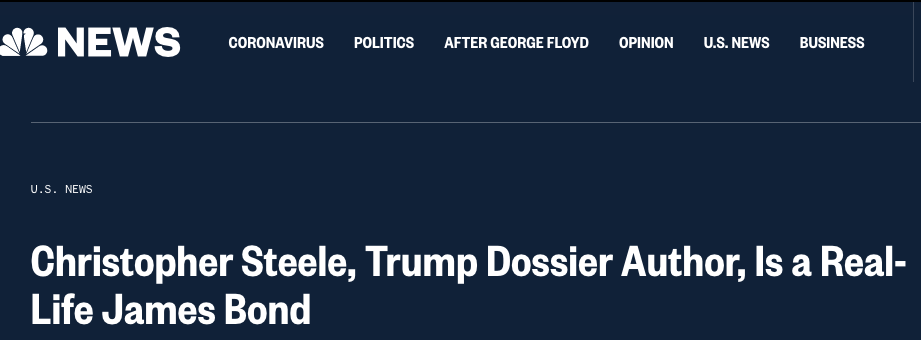
The Wall Street Journal also pumped up Steele, who was revealed as the mysterious British mastermind. Quoting the firm’s marketing material, the paper described his firm’s work as relying on a “global network” of “experts and business leaders” who conduct “complex, often cross-border investigations.” Of the operation that would be done by a man who had elsewhere been described as “desperate” to keep Trump out of office, a colleague was quoted as saying, “We have no political ax to grind.” Steele had a “good reputation in the intelligence world and was stationed in Russia for years,” according to a former CIA official.
Of note, the Wall Street Journal may have been one of the few if not only publications to at least include a contrary opinion about whether Steele, who peddled a cartoonishly false dossier, was the best spy to ever work. In the concluding paragraphs of the article penned by Bradley Hope, Michael Rothfeld, and Alan Cullison, a sole voice expressed skepticism of the dossier’s allegations, saying they were “not convincing at all.”
Andrew Wordsworth didn’t think it would make sense for Russian intelligence officials to give a former MI-6 officer state secrets and that the claims made were “just way too good.” He said, reasonably, “If the head of the CIA were to declare he got information of this quality, you wouldn’t believe it.”
In fact, when BuzzFeed published the dossier that CNN and others were praising as well-researched and credible, millions of Americans surmised what Wordsworth did. That almost no journalists reached this obvious conclusion is a shameful indictment of America’s media industry.
Any reporter with any sense at all could look at the criminal leak operation surrounding the dossier and the larger collusion narrative and figure out on his own that the real story was not that Trump was a Russian agent but that U.S. intelligence agencies were behaving in remarkably malicious and corrupt ways. (This reporter’s January 17, 2017 story headlined “Top-Level Intel Officers’ War Against Donald Trump Is Bad For The Country” is an example of what should have been obvious to hundreds of reporters.)
FIFA and Disinformation Claims Also False
The New York Times was also effusive about Danchenko and Steele’s work. On the day CNN helped intelligence officials with their anti-Trump operation, the Times’ Scott Shane, Adam Goldman, and Matthew Rosenberg penned a similar story. “Former C.I.A. officials described him as an expert on Russia who is well respected in the spy world,” they wrote, adding that he was “considered a competent and reliable operative with extensive experience in Russia.”
Of the operation that involved Steele embellishing the incredibly weird gossip and brainstorming Danchenko collected, the Times wrote:
As a former spy who had carried out espionage inside Russia, Mr. Steele was in no position to travel to Moscow to study Mr. Trump’s connections there. Instead, he hired native Russian speakers to call informants inside Russia and made surreptitious contact with his own connections in the country as well.
Shane, Goldman, and Rosenberg couldn’t find a single person to question the quality of the work that later turned out to be of no quality at all. “By all accounts, Mr. Steele has an excellent reputation with American and British intelligence colleagues and had done work for the F.B.I. on the investigation of bribery at FIFA, soccer’s global governing body. Colleagues say he was acutely aware of the danger he and his associates were being fed Russian disinformation,” they wrote.
There are two problems with that characterization. On the FIFA front, it became a well-worn talking point that Steele was considered credible because of his excellent work for the FBI on FIFA corruption. In fact, that’s what the FBI told the secret spy court that granted warrants to spy on the Trump campaign. They said Steele’s prior reporting had been “corroborated and used in criminal proceedings.”
It wasn’t true. Steele’s prior handling agent at the bureau told Inspector General Horowitz that he would have never approved such a description of Steele’s work, since most of his prior work had not been corroborated and none of it had ever been used in criminal proceedings.
As for his “acute” awareness of the danger of being fed Russian disinformation, that was also not true. Horowitz found that Steele was an agent of “Russian Oligarch 1,” a reference to Oleg Deripaska, and that he was in frequent contact with agents of Russian oligarchs. Had the FBI been properly informed that Steele was working both for the Clinton-funded operation and the Russian oligarch, they said they would have been much more sensitive to the possibility his entire operation was related to Russian disinformation.
The inspector general also noted a 2017 report showing that the FBI received information that there was reason for concern that Steele’s reporting about Michael Cohen “was part of a Russian disinformation campaign to denigrate U.S. foreign relations.” The “pee tape” allegation may have been the result of Russian intelligence services “infiltrating source into the network” of Danchenko.
British Press Goes Overboard
Luke Harding at The Guardian had excellent access to Steele. His description of Steele’s work could not have been more flattering. Of Steele’s collection of unsubstantiated gossip from Danchenko, he wrote, “At first, obtaining intelligence from Moscow went well. For around six months – during the first half of the year – Steele was able to make inquiries in Russia with relative ease. It got harder from late July, as Trump’s ties to Russia came under scrutiny. Finally, the lights went out. Amid a Kremlin cover-up, the sources went silent and information channels shut down.”
Sounds dramatic! And fictional!
“Steele was adamant that his reporting was credible. One associate described him as sober, cautious, highly regarded, professional and conservative. ‘He’s not the sort of person who will pass on gossip. If he puts something in a report, he believes there is sufficient credibility in it,’ the associate said. The idea that Steele’s work was fake or a cowboy operation or born of political malice was completely wrong,” Harding wrote.
Well, you can take that to the bank. “The dossier, Steele told friends, was a thoroughly professional job, based on sources who had proven themselves in other areas. Evaluating sources depended on a critical box of tools: what was a source’s reporting record, was he or she credible, what was the motivation?” Harding wrote.
Harding would later write a story claiming that Paul Manafort and WikiLeaks’ Julian Assange held clandestine meetings at the Ecuadorian embassy. Despite the lack of evidence in support of this blockbuster and explosive report, the story went viral as the media clung to their Russia collusion hoax.
It’s Not Fake News If Jane Mayer Isn’t Involved
The New Yorker’s Jane Mayer co-wrote one of the most widely mocked and disparaged stories of the Brett Kavanaugh confirmation process, and the competition for bad journalism in that debacle was fierce. Her hagiography of Steele was noteworthy in part because it came out so late in the process, well after few were clinging to the dossier.
The errors she transmits in her reporting are instructive. Here’s how she describes Steele’s work on the pee tape:
Within a few weeks, two or three of Steele’s long-standing collectors came back with reports drawn from Orbis’s larger network of sources. Steele looked at the material and, according to people familiar with the matter, asked himself, ‘Oh, my God—what is this?’ He called in Burrows, who was normally unflappable. Burrows realized that they had a problem. As Simpson later put it, ‘We threw out a line in the water, and Moby-Dick came back.’
Steele’s sources claimed that the F.S.B. could easily blackmail Trump, in part because it had videos of him engaging in ‘perverted sexual acts’ in Russia. The sources said that when Trump had stayed in the Presidential suite of Moscow’s Ritz-Carlton hotel, in 2013, he had paid ‘a number of prostitutes to perform a ‘golden showers’ (urination) show in front of him,’ thereby defiling a bed that Barack and Michelle Obama had slept in during a state visit.
The allegation was attributed to four sources, but their reports were secondhand—nobody had witnessed the event or tracked down a prostitute, and one spoke generally about ’embarrassing material.’ Two sources were unconnected to the others, but the remaining two could have spoken to each other. In the reports Steele had collected, the names of the sources were omitted, but they were described as ‘a former top-level Russian intelligence officer still active inside the Kremlin,’ a ‘member of the staff at the hotel,’ a ‘female staffer at the hotel when trump had stayed there,’ and ‘a close associate of trump who had organized and managed his recent trips to Moscow.’
Leaving aside that Steele had only one primary sub-source and not “two or three long-standing collectors,” here’s the ridiculous way that story made it into the dossier and, eventually, into a blackmail attempt of the president-elect by the sitting FBI director.
Danchenko asked Source 2, a “hustler always looking for a lucrative score,” whether he had any dirt on Trump. Source 2 said there was this pee-tape story he’d heard about. He said the hotel where it was alleged to have occurred was known to be bugged by Russian intelligence, so they might have video.
Danchenko met with the hotel managers and “during a free minute” asked them about the story. One of them said “all kinds of things happen at the hotel” with celebrities and “one never knows what they’re doing.” Danchenko opined that at least it “wasn’t a denial.”
Another hotel staffer commented that “anything goes” at the hotel and that “officially, we don’t have prostitutes.” Danchenko gave Steele the names of the management at the hotel. Danchenko also said he explicitly told Steele the story was “rumor and speculation” and that he hadn’t been able to confirm it.
One of the four claimed sources may not have actually been a source (the “close associate” who may not exist) and two of the four were just two rando hotel workers who weren’t even second-hand as Mayer described them.
A Special Shoutout to ‘Fusion’ Natasha Bertrand
Perhaps no reporter bootstrapped her credibility, as even the Washington Post put it, to Steele’s dossier as Natasha Bertrand did. Bertrand could have been Steele’s publicist and in fact has been jokingly referred to as “Fusion Natasha,” a reference to how frequently she promotes Fusion GPS’s discredited work in the various publications that have employed her. Bertrand calls Steele a “spymaster.”
Admitting that portions of the interrogation had been contentious, she wrote, quite inaccurately, that “investigators ultimately found Steele’s testimony credible and even surprising.” She described the false Steele reports about Carter Page that were used to justify spying on the innocent American as “not far off.”
Confronted with how much effort she put into distributing Steele’s false reports, including about the non-existent Moscow pee tape, the non-existent Cohen trip to Prague, and about non-existent misbehavior by Page, Bertrand told the Washington Post, “I stand by everything I’ve said on air and reported.”
This Aged Poorly
More than a year after Steele was identified as the author of the dossier, Christian Caryl, an editor with the Washington Post global opinions section, sang his praises.

Caryl is Steele’s top fan, and he’s honest about the central role the completely discredited dossier played in the Russia collusion hoax:
Christopher Steele, the former British spy whose claims about Donald Trump’s ties with Russia hold center stage in Washington right now, drives Republicans crazy. They have recommended that the Department of Justice open a criminal investigation into his work. They released a formerly classified memo by Rep. Devin Nunes (R-Calif.) that vilifies him — and now they are holding back a Democratic brief that tries to correct the record. Their Fox News minions have promised damning new revelations about Steele’s perfidy on a near-weekly basis…
Yet, try as they might, Steele continues to haunt them. You sense it in the tone of frustration and anxiety. “There’s nothing to see here,” they keep insisting. And insisting. And insisting.
What is it about Steele that possesses them so? Could it be that his findings from the summer of 2016 — when the world was still wondering why Trump kept saying such nice things about Russia’s Vladimir Putin — proved so extraordinarily prescient?
On and on it goes. According to Caryl, Steele had “sussed out the basic ingredients” of collusion by June 2016. While the inspector general and even the FBI admitted the dossier failed to pan out with any not-already-public information, Caryl quotes a former CIA agent saying it “turned out to be stunningly accurate.”
“If all the information in the dossier is false, it is a very sophisticated fabrication,” New York Times reporter Scott Shane wrote in “What We Know and Don’t Know About the Trump-Russia Dossier.” Many journalists set aside necessary skepticism to embrace this view.
As the sophisticated fabrication continues to unravel, the media that won Pulitzers and acclaim for hyping it are strikingly silent.
Edit: This piece has been updated to include an early NBC News contribution to the Steele narrative.


